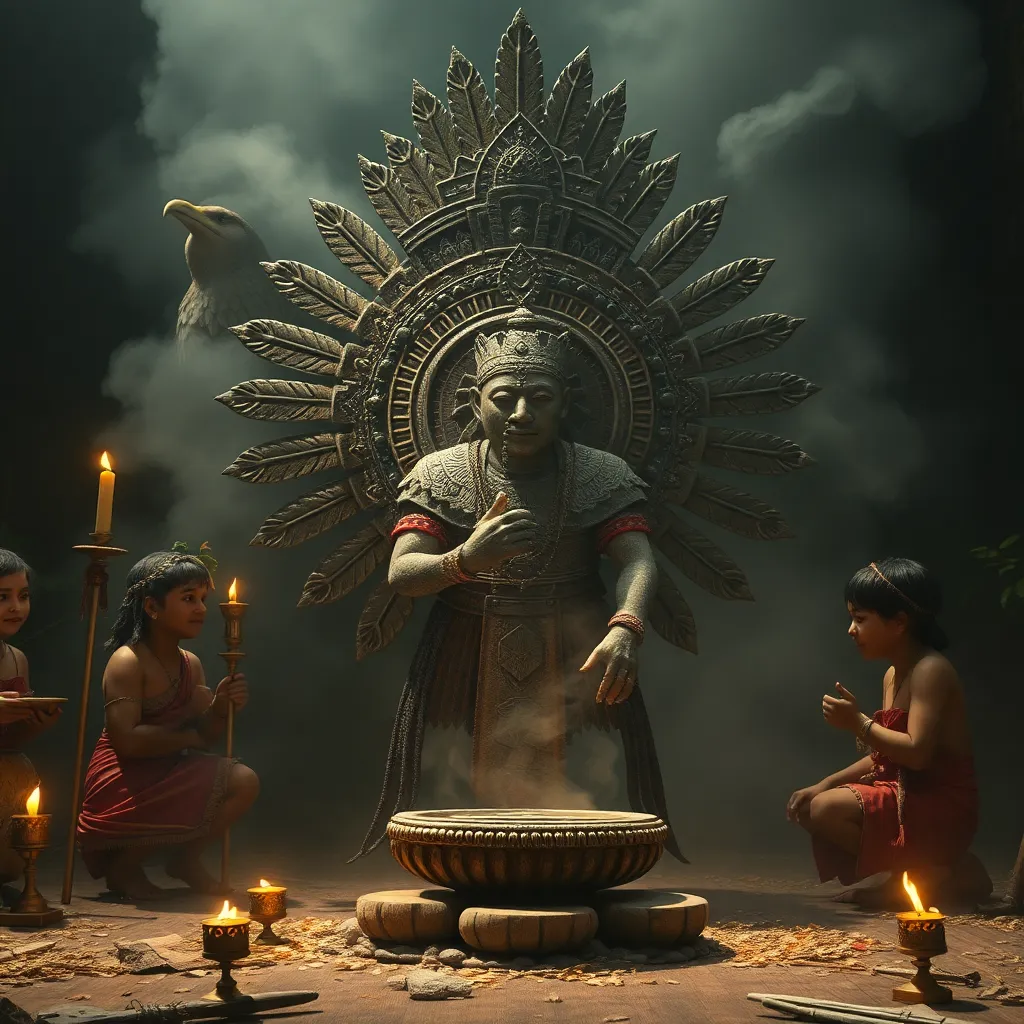The Mayan Rituals: Itzamná’s Presence in Offerings and Ceremonies
I. Introduction to Itzamná and Mayan Beliefs
Itzamná is one of the most significant deities in Mayan mythology, often regarded as the god of creation, wisdom, and the sky. He is a multifaceted figure associated with various aspects of life, including agriculture, medicine, and knowledge. The Mayans held a complex belief system that revolved around numerous gods and spirits, with Itzamná being a central figure in their cosmology.
In Mayan culture, rituals played a crucial role in maintaining harmony between the human world and the divine. These ceremonies were not only expressions of devotion but also essential for ensuring agricultural fertility and societal well-being. This article explores the intricate relationship between Itzamná and the rituals that were integral to Mayan life, highlighting the significance of offerings and ceremonies dedicated to this revered deity.
II. The Role of Itzamná in Mayan Cosmology
Itzamná’s attributes and associations are deeply embedded in Mayan cosmology. He is often depicted as an elderly man with a wise demeanor, symbolizing knowledge and enlightenment. His connections span various domains, including:
- Creation of the world and humanity
- Guardian of the celestial realms
- Promoter of agricultural abundance
Itzamná is also linked to key creation myths, such as the Popol Vuh, which narrates the origins of the world and humanity. His influence extends to agricultural practices, where he is invoked during planting and harvesting seasons to ensure a bountiful yield. The seasonal cycles were vital to the Mayans, and Itzamná’s presence was believed to directly impact these rhythms of life.
III. Ritual Offerings: Purpose and Significance
In the context of Mayan rituals, offerings are gifts presented to deities, intended to seek favor, express gratitude, or request assistance. There are various types of offerings in Mayan culture, including:
- Food offerings (fruits, maize, cacao)
- Incense and aromatic herbs
- Crafted items (pottery, textiles)
- Bloodletting rituals
The symbolism of offerings dedicated to Itzamná is profound. They represent a connection between the earthly realm and the divine, emphasizing the reciprocity that exists in the relationship between humans and gods. Offerings to Itzamná were often communal, fostering a sense of unity among participants and reinforcing social bonds within the community.
IV. Key Ceremonies Featuring Itzamná
Several major ceremonies prominently feature Itzamná, reflecting his integral role in Mayan spirituality. Notable among these are:
- The New Year Ceremony
- The Harvest Festival
- The Rain Dance
The “New Year” ritual, for instance, marks the beginning of a new agricultural cycle and involves various offerings to Itzamná to seek his blessings for a prosperous year ahead. Similarly, the “Harvest” ritual celebrates the successful reaping of crops, where gratitude is expressed through offerings and communal feasting. Priests and shamans play a crucial role in these ceremonies, acting as intermediaries between the people and Itzamná. Their knowledge of rituals and the proper conduct of offerings is essential for ensuring the efficacy of these spiritual practices.
V. Materials and Symbols Used in Offerings
The materials used in Itzamná’s offerings are diverse and carry significant meaning. Common items include:
- Maize: A staple food and symbol of life
- Cacao: Used in beverages for its energizing properties
- Flowers: Representing beauty and reverence
- Incense: To purify the space and invoke divine presence
Each of these materials has its own symbolism, often tied to specific colors and meanings. For example:
- White: Purity and peace
- Red: Vitality and life force
- Green: Fertility and growth
Food, incense, and other ritual items not only serve as offerings but also create a sensory experience that enhances the spiritual atmosphere of ceremonies. The scents and tastes of these items are believed to please Itzamná and invite his presence during rituals.
VI. The Influence of Itzamná in Everyday Life
Itzamná’s influence extends beyond formal rituals, permeating daily practices and beliefs of the Mayan people. His presence is felt in:
- Daily prayers and offerings at home altars
- Guidance in agricultural decisions
- Health practices, including herbal medicine
The connection between rituals and agricultural cycles is particularly evident, as many Mayans would offer prayers to Itzamná before planting crops, seeking his favor for growth and abundance. His influence also encompassed health and well-being, with many believing that invoking Itzamná could aid in healing and protection from ailments.
VII. Modern Interpretations and Revivals of Mayan Rituals
Today, many Mayan descendants continue to practice traditional rituals, often blending ancient beliefs with contemporary spirituality. The role of Itzamná remains significant in these modern interpretations, where he is often honored in community gatherings and spiritual ceremonies.
Preservation efforts for ancient rituals and beliefs are crucial for maintaining cultural identity. Many communities are actively engaged in reviving traditional practices, ensuring that the legacy of Itzamná and the richness of Mayan spirituality endure for future generations.
VIII. Conclusion: The Enduring Legacy of Itzamná in Mayan Culture
The influence of Itzamná on rituals and offerings is profound, reflecting the interconnectedness of the Mayan worldview. His presence in ceremonies, from agricultural festivals to daily practices, underscores the importance of maintaining a harmonious relationship with the divine.
As we reflect on the importance of preserving cultural heritage, it becomes evident that the rituals surrounding Itzamná are not merely relics of the past but living traditions that continue to resonate today. They offer valuable insights into the relationship between humanity and the cosmos, reminding us of the enduring legacy of the Mayan civilization and its beliefs.



